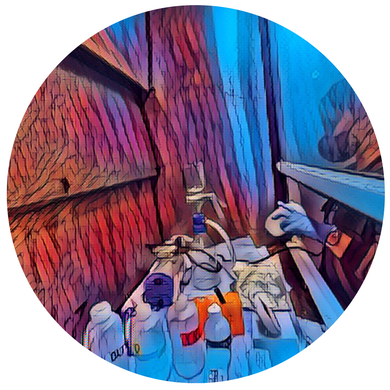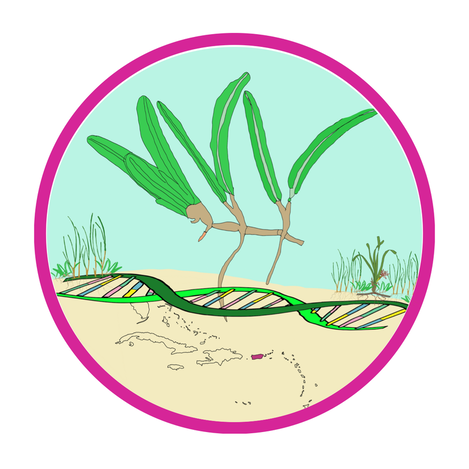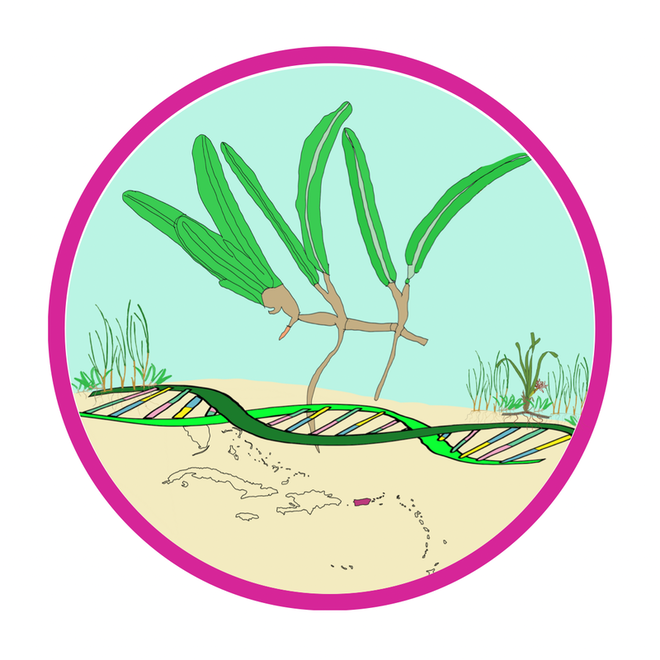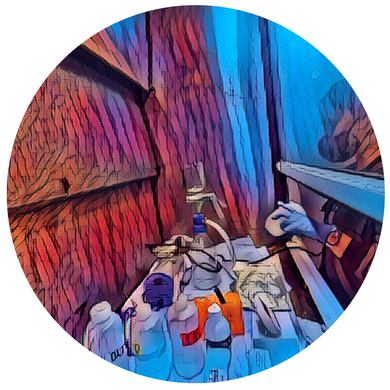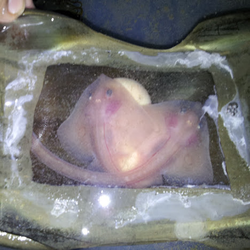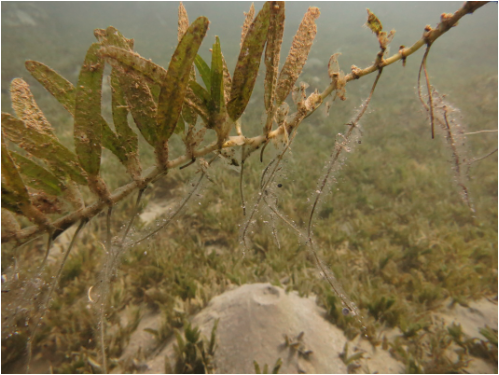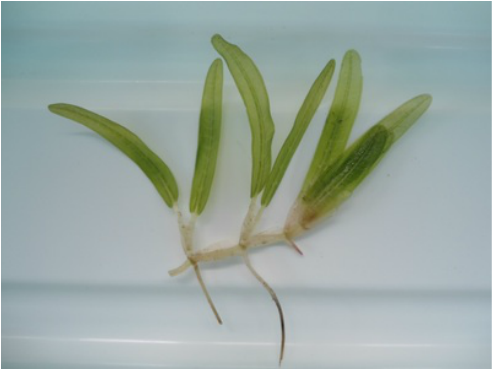Estimating biodiversity using eDNA in Biscayne, Bay, Florida
Like many regions around the world, Biscayne Bay in South Florida is subject to urbanization, pollution, and other environmental disruptions. Organisms leave genetic traces behind in their environments. By collecting, isolating, and metabarcoding eDNA, we can use a non-invasive genetic technique to assesses community composition and biodiversity from the environment.
This approach complements other traditional visual surveys when environments have low- visibility. I am a co-PI of this project, funded by the Herbert W. Hoover Foundation with other researchers at FIU (co-Pis Drs. Juliet Wong, Dr. Jose Eirin-Lopez's Environmental epigenetic lab (EELab), and Piero Gardinali). This work will provide novel insights into understanding how differences in water quality influence biodiversity.
Research funded by - Herbert W. Hoover Foundation
This approach complements other traditional visual surveys when environments have low- visibility. I am a co-PI of this project, funded by the Herbert W. Hoover Foundation with other researchers at FIU (co-Pis Drs. Juliet Wong, Dr. Jose Eirin-Lopez's Environmental epigenetic lab (EELab), and Piero Gardinali). This work will provide novel insights into understanding how differences in water quality influence biodiversity.
Research funded by - Herbert W. Hoover Foundation
Do changes in the environment change epigenetic signatures related to invasion potential?
Currently, I work in Dr. Jose Eirin-Lopez's Environmental epigenetic lab (EELab), in collaboration with Universidad Puerto Rico, Río Piedras (UPR) and Sociedad Ambiente Marino (SAM). We have developed a project to understand how changes in local water quality (excess in nutrients) and species interactions, or the out competition of native seagrasses by an invasive seagrass, are impacting their epigenetic processes.
It is hypothesized that climate change can facilitate the invasion of exotic species into degraded habitats. To investigate this, we conducted a reciprocal transplant experiment between invasive Halophila stipulacea and native Syringodium filiforme seagrasses, respectively, to assess how species interactions affects the local acclimation and adaptation along a nutrient gradient. Seagrass cores were extracted from mixed seagrass communities and transplanted into areas with bare sand devoid of seagrasses. The outcomes of this research will determine which factors and habitat characteristics promote invasion success. This is particularly important as it informs management in the recovery of seagrass communities, which support a wide variety of fauna (e.g., fish, sea turtles, manatees and birds); thus, having a societal implication by altering ecosystem services on which people depend
Research funded by - NSF Postdoctoral Research Fellowship in Biology (NSF PRFB)
It is hypothesized that climate change can facilitate the invasion of exotic species into degraded habitats. To investigate this, we conducted a reciprocal transplant experiment between invasive Halophila stipulacea and native Syringodium filiforme seagrasses, respectively, to assess how species interactions affects the local acclimation and adaptation along a nutrient gradient. Seagrass cores were extracted from mixed seagrass communities and transplanted into areas with bare sand devoid of seagrasses. The outcomes of this research will determine which factors and habitat characteristics promote invasion success. This is particularly important as it informs management in the recovery of seagrass communities, which support a wide variety of fauna (e.g., fish, sea turtles, manatees and birds); thus, having a societal implication by altering ecosystem services on which people depend
Research funded by - NSF Postdoctoral Research Fellowship in Biology (NSF PRFB)
Invasive Marine Ecology
I am interested in uncovering the link between climate change and the mechanisms that drive invasion success to the functioning of ecosystems. My research integrates field studies and cutting-edge molecular genomic tools to understand a variety of ecological and evolutionary questions in marine and terrestrial environments to better inform management and restoration.
|
|
Ecological and conservation questions |
|
- Habitat distribution- do environmental changes and species interactions drive invasion success?
- Novel microbes- what composition of novel microbes are associated with invasions?
- Genomic architecture- what abiotic and biotic processes influence invasive species' genomic architecture?
- Suitable habitat- how biological invasions alter suitable habitats for native species and alter ecosystem services?
Publications:
|
|
Current research project info |
|
Currently, I work in Dr. Jose Eirin-Lopez's Environmental epigenetic lab (EELab), in collaboration with Universidad Puerto Rico, Río Piedras (UPR) and Sociedad Ambiente Marino (SAM). We have developed a project to understand how changes in local water quality (excess in nutrients) and species interactions, or the out competition of native seagrasses by an invasive seagrass, are impacting their epigenetic processes.
It is hypothesized that climate change can facilitate the invasion of exotic species into degraded habitats. To investigate this, we conducted a reciprocal transplant experiment between invasive Halophila stipulacea and native Syringodium filiforme seagrasses, respectively, to assess how species interactions affects the local acclimation and adaptation along a nutrient gradient. Seagrass cores were extracted from mixed seagrass communities and transplanted into areas with bare sand devoid of seagrasses. The outcomes of this research will determine which factors and habitat characteristics promote invasion success. This is particularly important as it informs management in the recovery of seagrass communities, which support a wide variety of fauna (e.g., fish, sea turtles, manatees and birds); thus, having a societal implication by altering ecosystem services on which people depend Research funded by - NSF Postdoctoral Research Fellowship in Biology (NSF PRFB) |
Like many regions around the world, Biscayne Bay in South Florida is subject to urbanization, pollution, and other environmental disruptions. Organisms leave genetic traces behind in their environments. By collecting, isolating, and metabarcoding eDNA, we can use a non-invasive genetic technique to assesses community composition and biodiversity from the environment.
This approach complements other traditional visual surveys when environments have low- visibility. I am a co-PI of this project, funded by the Herbert W. Hoover Foundation with other researchers at FIU (co-Pis Drs. Juliet Wong, Dr. Jose Eirin-Lopez's Environmental epigenetic lab (EELab), and Piero Gardinali). This work will provide novel insights into understanding how differences in water quality influence biodiversity. Research funded by - Herbert W. Hoover Foundation |
|
|
Check out my international and domestic research.
|
|
